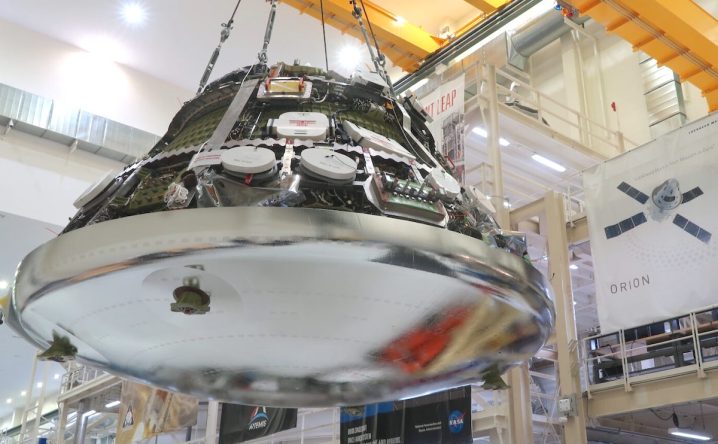
NASA’s crewed Artemis II moon mission took an important step forward recently when the crew capsule was linked together with the service module.
The integration took place at the Neil Armstrong Operations and Checkout Building at NASA’s Kennedy Space Center in Florida last week and was reported by NASA in a post on social media on Tuesday.
“After successfully completing hardware installations and testing over the past several months, engineers connected the two major components of Orion that will fly NASA astronauts Reid Wiseman, Victor Glover, and Christina Koch, along with CSA (Canadian Space Agency) astronaut Jeremy Hansen, on a mission around the moon and bring them home safely,” NASA said.
The all-important service module is located beneath the Orion crew capsule and during next year’s Artemis II mission will provide propulsion, power, thermal control, and water and air for the four astronauts. The service module fits inside a housing surrounded by three spacecraft adapter jettison fairing panels. During launch, these panels protect against severe heat, wind, and acoustics, but once Orion is free from Earth’s atmosphere, the fairing panels are jettisoned to allow the spacecraft’s solar arrays to unfold. Just before the crew capsule enters Earth’s atmosphere at the end of the mission, the service module detaches and burns up.
The next job of the Artemis II mission team is to power up the combined crew and service module for the first time to confirm that it’s in perfect working order. After that, altitude chamber testing will be conducted on Orion, a process that subjects the spacecraft as closely as possible to the harsh conditions that it will experience in space.
The Orion spacecraft traveled to space for the first time in the uncrewed Artemis I mission toward the end of last year, so engineers have a good idea of how the current spacecraft will respond to the upcoming tests.
The crewed Artemis II mission, slated for November 2024, will follow the same path of Artemis I, coming within about 80 miles of the lunar surface before heading out further into space and then returning home. The mission is expected to last about 10 days.
Following this first flight with a crew onboard, NASA is planning to launch the Artemis III mission in 2025, taking the first humans to the lunar surface since the final Apollo mission in 1972.
Editors' Recommendations
- Watch NASA begin testing its Orion capsule for lunar flyby
- NASA astronauts will try to grow plants on the moon
- Artemis II lunar crew rehearses splashdown in the Pacific
- Fly your name to the moon as part of historic NASA mission
- NASA tests moon elevator for Artemis III mission


